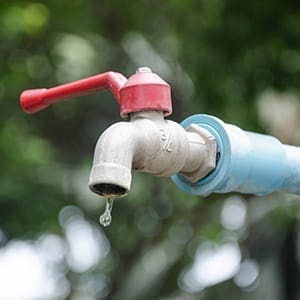

Because we usually do get a decent amount of rain, it’s sometimes easy to think that the Gulf Coast doesn’t have a water problem. But according to the Lone Star Groundwater Conservation District (LSGCD), water levels in our local aquifers have declined at an alarming rate, while the population of Montgomery County alone is expected to double in just 25 years.
That’s why it’s really important to make water conservation a top priority when planning any landscaping. To help you with that, we’ve compiled a list of water-conservancy landscaping ideas that are as beautiful as they are water-conscious.
- Go native. Once established, regionally appropriate plants and shrubs should require little water beyond normal rainfall. Native plants also tend to be more resistant to pests and diseases. A few local favorites are:
- Sun — purple coneflower, scarlet sage, guara, pink evening primrose
- Shade — big thicket hibiscus, Turk’s cap, Arkansas yucca, farkleberry
- Get in the zone. In other words, group plants with similar water needs together. This allows you to water according to each zone without overwatering the entire yard. Consider placing the thirstiest plants near your house so they can benefit from roof runoff.
- Stay cool. If you install new plants in the early spring or early fall, they should be established by summer and require less watering. When you do water, do so in the cool of morning to minimize evaporation.
- Stabilize slopes. Slopes are subject to erosion and runoff, so try to avoid or minimize. If slopes can’t be avoided, plant trees and shrubs with deep root systems to provide stabilization. Rough-leaf dogwood, green ash, coral berry, and Virginia sweetspire are excellent erosion-control choices.
- Get new turf. The St. Augustine grass variety common to our area is a water-guzzler. Native Sun Turfgrass, which is a blend of blue grama and buffalograss, is more eco-friendly.
- Go easy on the grass. You don’t like mowing anyway, right? In addition to flowering plants and shrubs, try creating beds of native tall grasses such as switchgrass or gulf muhly for visual interest. Groundcover makes an excellent substitute for lawn areas; prairie verbena is one variety that thrives in sun, while pigeonberry favors shade. And take advantage of a paver-and-grass design for garden pathways or patios. The non-interlocking pavers cut down on turf area, while the grass between impedes runoff.
- Mulch away. Mulching around beds, trees, and shrubs keeps plants cool, reduces weed growth, and minimizes evaporation.
For more information specific to the Texas Gulf Coast area, check out the Native Plant Guide by the Native Plant Society of Texas.
The right choice of plants and where to plant them can provide beauty and lower maintenance for years, all while conserving our most valuable natural resource, water.
Post Categories
Why Choose Us?
- We're strategically located in Pearland, TX
- Expertise to service all of your HVAC equipment
- Our technicians are NATE-certified
- We are an ACCA member company
- BBB accredited south Texas HVAC business
- We stand behind all of our HVAC work
